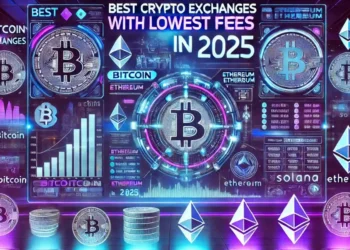Trump as the “Crypto President”: A pivotal shift
Donald Trump’s surprising embrace of cryptocurrency has redefined his political identity. Previously a critic of digital assets, his 2024 campaign positions BTC at the forefront of his economic strategy. The Bybit x Block Scholes Quarterly Institution Report highlights this transformation, emphasizing the potential impact on U.S. crypto regulation and global market sentiment.
- What does it mean for U.S. policies? With a Republican majority in Congress, Trump’s return signals possible regulatory reforms aimed at promoting innovation in the digital assets space.
- Could this mark a turning point for institutional adoption? The report notes an “insatiable appetite” among institutional investors for BTC exposure, driven by Trump’s pro-crypto stance.
Post-Election market dynamics
The cryptocurrency market has already felt the effects of Trump’s victory. According to the Bybit x Block Scholes Quarterly Institution Report, BTC prices surged from $70,000 to over $90,000 within weeks, underscoring the correlation between political optimism and market performance.
Key takeaways:
- Market Sentiment: Investors are bullish on Trump trades, anticipating economic policies favorable to crypto growth.
- Volatility: The intense price swings reflect the market’s reaction to post-election developments.
- Institutional Influence: Institutional buy-ins have fueled the rally, though their focus remains heavily weighted toward BTC, with limited spillover into altcoins.
Regulatory Reforms: A new dawn for Crypto?
The report identifies regulatory clarity as a critical factor in the crypto market’s future. The Republican majority in Congress, combined with Trump’s leadership, creates an environment ripe for pro-crypto legislation.
- Impactful Reforms: Key Senate races and political spending have reshaped legislative priorities, placing crypto-friendly policies on the agenda.
- Investor Confidence: Regulatory certainty could attract new market participants, driving capital inflows and innovation.
What do you think? Could clearer regulations finally unlock the full potential of digital assets?
Altcoins on the rise
While BTC remains the dominant force, the report predicts increased interest in altcoins like ETH and SOL. Historically, Bitcoin’s dominance peaks during bull markets, followed by a capital shift into altcoins as investors seek higher returns.
Altcoin outlook:
- Smart Contracts and DeFi: Networks enabling decentralized finance are poised to benefit from legislative focus on innovation.
- ETH and SOL: These altcoins will likely see renewed investment, supported by pro-crypto policies.
- Future Growth: Could this be the moment for altcoins to shine? Investors are closely watching the regulatory landscape.
Institutional appetite for BTC
The Bybit x Block Scholes Quarterly Institution Report highlights strong institutional demand for Bitcoin. With ETFs and other investment vehicles gaining traction, institutions are solidifying their positions in the crypto market.
- ETF Ecosystem: While BTC-focused, the current ETF landscape limits exposure to other digital assets.
- Macro Trends: Bitcoin’s strengthening correlation with traditional assets signals its growing acceptance as a mainstream investment.
What’s your take? Will Bitcoin’s dominance continue, or will altcoins steal the spotlight in 2024?
The role of Bybit in shaping the future
As the second-largest cryptocurrency exchange by trading volume, Bybit plays a pivotal role in the global crypto ecosystem. The Quarterly Institution Report, created in collaboration with Block Scholes, reinforces Bybit’s commitment to providing actionable insights for institutional investors and traders.
Bybit’s Key offerings:
- Cutting-Edge Technology: Ultra-fast matching engines and seamless user experience.
- Global Reach: Serving over 50 million users with multilingual support.
- Innovative Research: Reports like this showcase Bybit’s expertise in crypto market analysis.
For more information, visit Bybit’s official site
Conclusion
The Bybit x Block Scholes Quarterly Institution Report underscores the transformative potential of Trump’s presidency for the cryptocurrency market. The stage is set for significant growth with regulatory clarity, institutional adoption, and altcoin innovation on the horizon. Are you ready to navigate this new era of crypto opportunities? Explore the full report and stay ahead in the ever-evolving crypto landscape!
For more details about Bybit, please visit Bybit Press
For updates, please follow: Bybit’s Communities and Social Media
Discord | Facebook | Instagram | LinkedIn | Reddit | Telegram | TikTok | X | Youtube
FAQs
What is the Bybit x Block Scholes Quarterly Institution Report?
It’s a comprehensive analysis of market trends, focusing on the intersection of politics, regulation, and institutional crypto investment.
Why is Donald Trump called the “Crypto President”?
Trump’s 2024 campaign embraces Bitcoin, marking a dramatic shift in his stance on cryptocurrency and positioning him as a pro-crypto leader.
How has Trump’s return impacted the crypto market?
BTC prices surged post-election, reflecting optimism about potential pro-crypto policies and regulatory clarity.
What are the top insights from the report?
The report highlights institutional appetite for BTC, potential altcoin growth, and the impact of regulatory reforms under Trump’s leadership.
Where can I access the full report?
Visit Bybit’s official site to access the full Bybit x Block Scholes Quarterly Institution Report.
Follow us on our social networks and keep up to date with everything that happens in the Metaverse!
Twitter Linkedin Facebook Telegram Instagram Google News Amazon Store
Recent Posts
- Best Crypto Exchanges with lowest fees in 2025
- How to accept Bitcoin Payments and other Cryptocurrency as a Business
- Metaverse Fashion Week 2025: Global Designers Challenge Borders, Identity, and the Limits of Physical Fashion
- Elon Musk’s AI platform — Presentation of New AI Assistant from ArbitrageScanner. Traders review
- Finnovex Saudi Arabia 2025: Empowering the Fintech Ecosystem — From Disruption to Collaboration












































